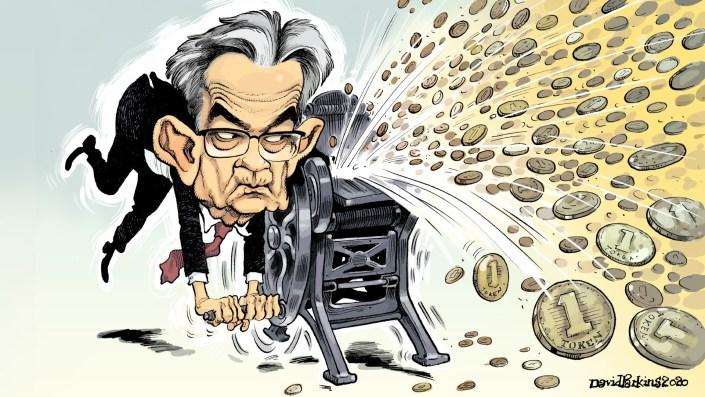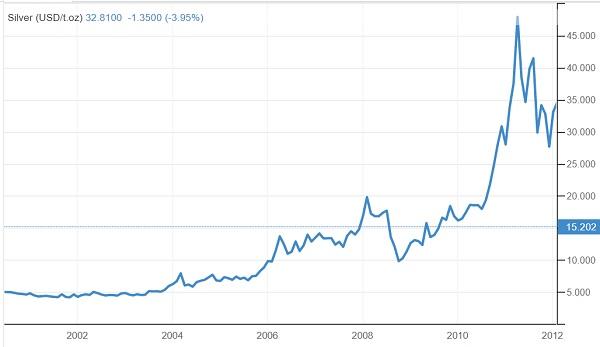Finally, It Matters What The Fed Can And Can’t Print
Authored by John Rubino via DollarCollapse.com,
Sound money advocates have been proclaiming that “the Fed can’t print gold” pretty much since the end of the last gold standard in 1971. But no one outside our little echo chamber paid attention, fixating instead on what the Fed could print: trillions of dollars that were perfectly fine for buying anything a creditworthy person could want. To paraphrase the old Saturday Night Live skit, “Fiat currency has been berry berry good to me.”
But the reaction of the world’s central banks to this latest crisis – effectively unlimited currency creation to buy up/bail out everything everywhere – seems to have rattled people who in the past have viewed aggressively-easy money as an unequivocally good thing:
‘The Fed can’t print gold’: How the yellow metal could hit $3,000 — 50% above the current record
(Financial Post) – Bank of America Corp. raised its 18-month gold-price target to US$3,000 an ounce — more than 50 per cent above the existing price record — in a report titled “The Fed can’t print gold.”
The bank increased its target from US$2,000 previously, as policy makers across the globe unleash vast amounts of fiscal and monetary stimulus to help shore up economies hurt by the coronavirus.
“As economic output contracts sharply, fiscal outlays surge, and central bank balance sheets double, fiat currencies could come under pressure,” analysts including Michael Widmer and Francisco Blanch said in the report. “Investors will aim for gold.”
BofA expects bullion to average US$1,695 an ounce this year and US$2,063 in 2021. The record of US$1,921.17 was set in September 2011. Spot prices traded around US$1,678 on Tuesday and are up 11 per cent this year.
To be sure, a strong dollar, reduced financial market volatility, and lower jewelry demand in India and China could remain headwinds for gold, BofA said.
“But beyond traditional gold supply and demand fundamentals, financial repression is back on an extraordinary scale,” the report said.
This sentiment shift is a potentially big deal for at least two reasons:
1) The vast majority of investors are amateurs, which is to be expected. Few people know how to repair cars, diagnose illnesses, or manage money. Instead, we rely on trusted experts to do those things for us, and in the world of money, the experts whom most people trust have traditionally ignored or trashed precious metals because bullion doesn’t pay dividends or otherwise generate cash flow. This is a deal-breaker in normal times for conventional money managers.
But now those same money managers, spooked by the prospect of soaring debt and unpredictable volatility, are tiptoeing into safe havens like precious metals. Or, in BofA’s case, jumping in with both feet. That means the 99% of investors who either didn’t know gold existed or were steered away from it by their financial advisors are now being actively told to buy it.
2) The amounts of money in play absolutely dwarf the amount of available metal and related derivatives like mining stocks.
While there is admittedly a fair bit of gold sitting in vaults around the world, 99% of it is not for sale because central banks need it to back their currencies (and are in fact net buyers now), while owners of jewelry tend to keep their family heirlooms regardless what the spot price of bullion does.
Meanwhile, the silver market is almost too small to notice in the context of asset classes like stocks and bonds. You could probably tuck all the available silver bullion into the space created by the coming collapse of shale oil junk bonds, with room left over for all the pure-play silver miners.
The conclusion? A ton of “generalist” money is about to start chasing a relatively tiny supply of monetary metals and related stocks.
That’s good for gold but great for silver, which quadrupled the last time it came into favor:
And that was with the vast majority of financial advisors ignoring it. This time around, with precious metals suddenly trendy, the action could be life-changing.
Tyler Durden
Tue, 04/28/2020 – 05:00

